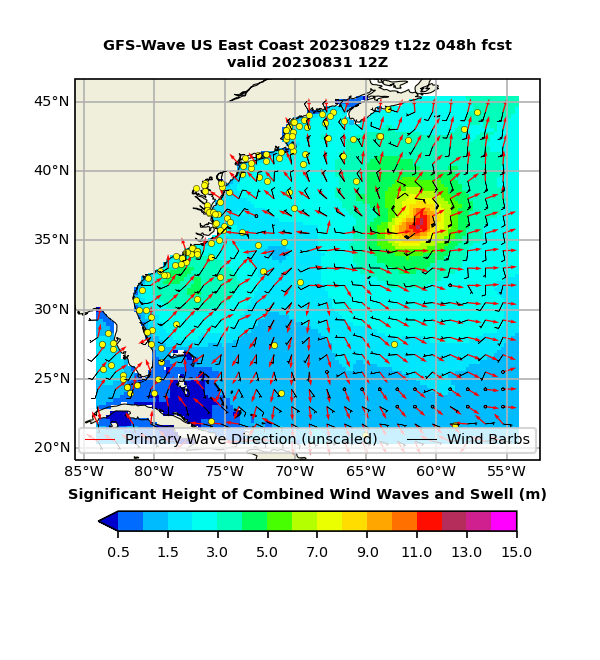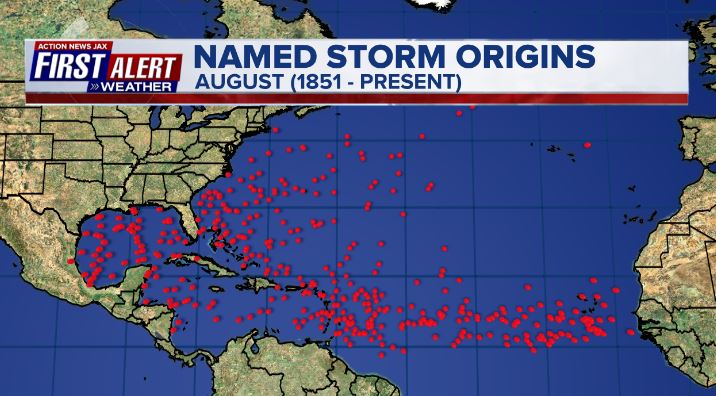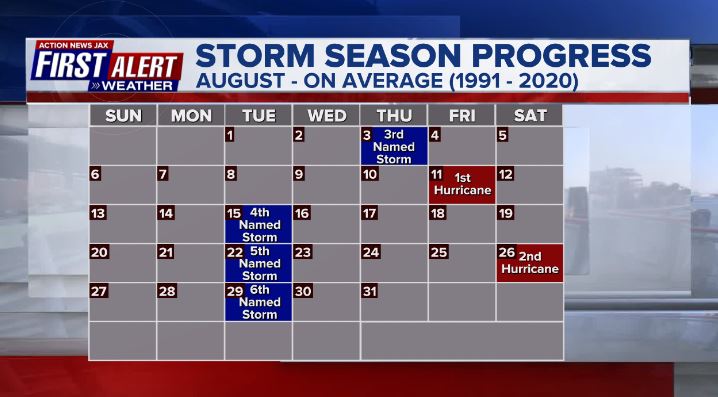Jacksonville, Fl. — The “Buresh Bottom Line”: Always be prepared!.....First Alert Hurricane Preparation Guide... City of Jacksonville Preparedness Guide... Georgia Hurricane Guide.
STAY INFORMED: Get the * FREE * First Alert Weather app
FREE NEWS UPDATES, ALERTS: Action News Jax app for Apple | For Android
WATCH “Preparing for the Storm”
WATCH “The Ins & Outs of Hurricane Season”
READ the First Alert Hurricane Center “Survival Guide”
LISTEN & WATCH “Surviving the Storm” - WOKV Radio & Action News Jax
***** ALWAYS CHECK & RE-CHECK THE LATEST FORECAST & UPDATES! *****
REMEMBER WHEN A TROPICAL STORM OR HURRICANE IS APPROACHING: Taping windows is *not* recommended & will not keep glass from breaking. Instead close curtains & blinds.
Realize the forecast cone (”cone of uncertainty”) is the average forecast error over a given time - out to 5 days - & *does not* indicate the width of the storm &/or where damage that might occur.
A weak surface trough in tandem with an “upper tropospheric trough” (TUTT) continues to produce scattered downpours across NE Florida and SE Georgia today. A weak area of low pressure developed overnight/early Friday as this feature moved just east of Jacksonville’s coastline. There won’t be enough time for anything “tropical” to develop as this weak surface low will move inland today. Bands of heavy downpours will continue to move inland through the day and into the afternoon. A brief waterspout may develop offshore as well.
Central Atlantic... A tropical wave continues to move west-northwest across the Central Atlantic. Showers and storms with this feature have increased a bit since yesterday. There is some possibility for development this weekend or early next week as it moves across the Central Atlantic. Our current First Alert forecast calls for this to “recurve.” It looks like, as of now, there will be a weakness in a ridge of high pressure over the Atlantic. This, in conjunction with an upper-level trough over Northeast U.S., should help whatever develops to turn north and miss the U.S. All of that said, we will need to see if and when it actually develops to get a better handle on the long-term forecast.
Western Caribbean... What used to be “95-L” has had a flare-up of convection over the past 24 hours in the Western Caribbean Sea. It found an area of lower wind shear after battling the classic Caribbean buzzsaw of shear over the past several days. There won’t be enough time for this area to develop as it will move inland over Central America later today/tonight.





Water vapor loop (dark blue/yellow is dry mid & upper level air):


July tropical cyclone origins:
Averages below based on climatology for the Atlantic Basin for August:

Wind shear:




Saharan dust spreads west each year from Africa by the prevailing winds (from east to west over the Atlantic). Dry air - yellow/orange/red/pink. Widespread dust is indicative of dry air that can impede the development of tropical cyclones. However, sometimes “wanna’ be” waves will just wait until they get to the other side of - or away from - the plume then try to develop if other conditions are favorable. In my personal opinion, way too much is made about the presence of Saharan dust & how it relates to tropical cyclones. In any case, the peak of Saharan dust typically is in June & July.

2023 names..... “Emily” is the next name on the Atlantic list (names are picked at random by the World Meteorological Organization... repeat every 6 years). Historic storms are retired [Florence & Michael in ’18... Dorian in ’19 & Laura, Eta & Iota in ‘20, Ida in ‘21 & Fiona & Ian in ‘22]). In fact, this year’s list of names is rather infamous with “Katrina”, “Rita” & “Wilma” retired from the ‘05 list & “Harvey”, “Irma”,“Maria” & “Nate” from the ‘17 list. The WMO decided - beginning in 2021 - that the Greek alphabet will be no longer used & instead there will be a supplemental list of names if the first list is exhausted (has only happened three times - 2005, 2020 & 2021). The naming of tropical cyclones began on a consistent basis in 1953. More on the history of naming tropical cyclones * here *.





East Atlantic:





Mid & upper level wind shear (enemy of tropical cyclones) analysis (CIMMS). The red lines indicate strong shear:
Water vapor imagery (dark blue indicates dry air):

Deep oceanic heat content over the Gulf, Caribbean & deep tropical Atlantic. The brighter colors will expand rather dramatically by Aug./Sept./Oct.:

Sea surface temp. anomalies:


SE U.S. surface map:

Surface analysis centered on the tropical Atlantic:

Surface analysis of the Gulf:

Caribbean:

GFS wave forecast at 48 & 72 hours (2 & 3 days):


Atlantic Basin wave period forecast for 24, 48 & 72 hours respectively:



East/Central Pacific:




West Pacific:

Global tropical activity:
“Doksuri” is near the extreme Northern Philippines & will make a China landfall by late week:




Cox Media Group
:quality(70)/cloudfront-us-east-1.images.arcpublishing.com/cmg/KSK2GJATWZDXFCRSQK22CE442U.png)



:quality(70)/cloudfront-us-east-1.images.arcpublishing.com/cmg/OA5VFVKXALI3DDBN7YA7WH6CTE.jpg)
:quality(70)/d1hfln2sfez66z.cloudfront.net/10-31-2024/t_62a37f939b3546eda3668cefb692ca57_name_file_960x540_1200_v3_1_.jpg)
:quality(70)/d1hfln2sfez66z.cloudfront.net/10-30-2024/t_96f5c4f8145b481cbd3b05c492b5e5c2_name_file_960x540_1200_v3_1_.jpg)
:quality(70)/cloudfront-us-east-1.images.arcpublishing.com/cmg/GILA75WVI5HTDLH5LJNKCUQVQM.jpg)
:quality(70)/d1hfln2sfez66z.cloudfront.net/10-31-2024/t_0bbe782cd9484b4280d318d45d1455ea_name_file_960x540_1200_v3_1_.jpg)